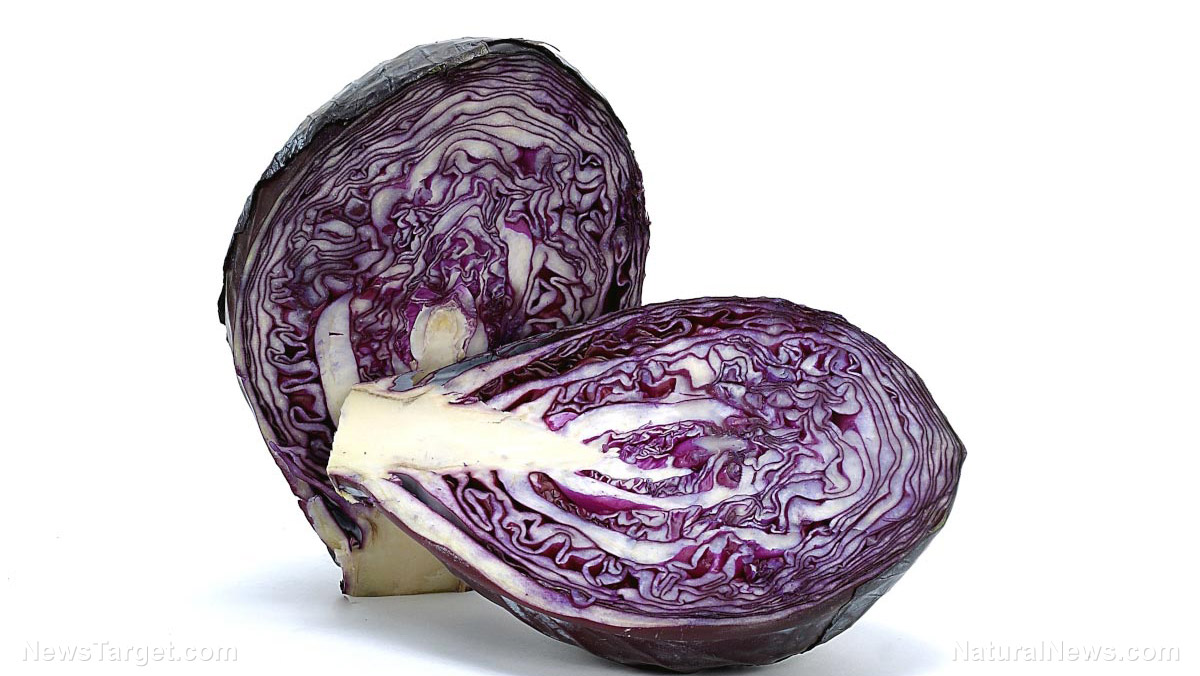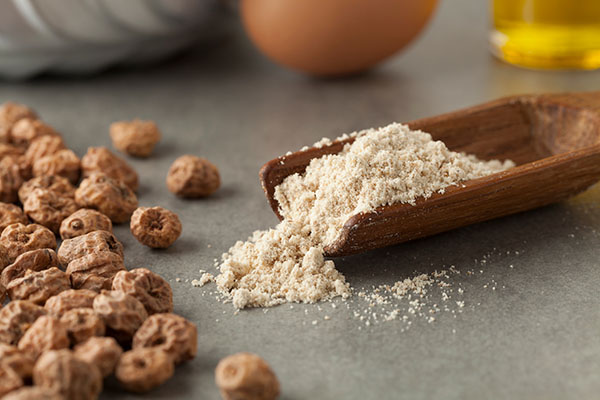
Advertisement
Red cabbage is an eye-catching and nutritious vegetable. You might have already tried it if you’ve eaten coleslaw or borscht before.
If you want to boost your heart or gut health, try adding red cabbage to your regular diet.
The nutritional profile of red cabbage
Red cabbage, sometimes called purple cabbage, belongs to the Brassica oleracea plant species and is related to other superfoods like broccoli, Brussels sprouts and kale.
Unlike other vegetables in the Brassica family, red cabbage is purple. Its unique color is responsible for its many unique benefits. Anthocyanins provide red cabbage with its unique color, and these compounds are powerful antioxidants that offer several benefits.
When eaten raw, red cabbage is crunchy with a slightly peppery taste. Cooked red cabbage is softer and has a sweeter flavor.
Red cabbage is a nutrient-dense superfood. A serving of red cabbage (89 grams) contains the following nutrients:
- Carbohydrates – 2 percent of the Daily Value (DV)
- Fiber – 7 percent of the DV
- Vitamin C – 85 percent of the DV
- Vitamin K – 42 percent of the DV
- Vitamin A – 20 percent of the DV
- Manganese – 11 percent of the DV
- Vitamin B6 – 9 percent of the DV
- Potassium – 6 percent of the DV
Red cabbage: A superfood for your heart and digestive health
Red cabbage contains anthocyanin antioxidants that may help reduce levels of systemic inflammation and protect against some chronic diseases.
Cruciferous vegetables are also rich in compounds called indoles which are linked to improved liver health and detoxification.
Here are six of the amazing benefits of eating red cabbage:
They are full of beneficial plant compounds:
Data suggests that antioxidants and other phytochemicals offer several benefits and can help prevent disease. Red cabbage may also help prevent cell damage and promote overall health.
Compared to green cabbage, red cabbage contains more of the following antioxidants with different benefits:
- Anthocyanins and flavonoids, which help lower blood pressure.
- Carotenoids, which converts to vitamin A, helps boost your eye health.
- Kaempferol, which helps reduce LDL (“bad” cholesterol) accumulation in the arteries.
- Vitamin C, which is essential for a stronger immune system.
- Vitamin K, which is crucial for stronger bones.
Data has also found that sulforaphane, another plant compound found in red cabbage, is associated with heart-health benefits and an ability to prevent certain cancers.
Some studies have shown that red cabbage and other cruciferous vegetables are some of the best dietary sources of indole, which can help improve gut health and detoxify the liver.
Red cabbage can help reduce inflammation
Low-grade chronic inflammation is linked to several health problems such as heart disease, rheumatoid arthritis and Type 2 diabetes.
Experts note that red cabbage can help fight inflammation because of its incredible nutritional profile. According to a test-tube study using an artificial human gut model, red cabbage helped lower markers of gut inflammation by as much as 40 percent.
Red cabbage can help boost heart health
Red cabbage can help improve heart health in several ways:
Red cabbage contains over 36 types of anthocyanins. These compounds can help reduce blood pressure and reduce heart disease risk factors. According to data from observational studies, diets high in anthocyanins may help lower the risk of heart attacks by at least 32 percent.
Kaempferol, another plant compound in red cabbage, can help oxidize bad LDL cholesterol and prevent atherosclerosis.
Red cabbage can boost your gut health
Red cabbage can improve your gut health because it is a good source of dietary fiber that is needed for digestion. Fiber also feeds “good” gut bacteria and promotes regular bowel movements.
Studies also suggest that red cabbage can potentially help lower gut inflammation through its ability to promote the growth of short-chain fatty acids (SCFAs). Higher levels of SCFAs are linked to better liver health.
Red cabbage can boost your liver health
Red cabbage is a great source of dietary indole, and the superfood may have a role in improving your liver health. Studies show that having higher levels of indole is linked to a reduced risk of liver disease.
Findings also suggest that indole can help treat and repair liver damage by lowering the level of toxins in the liver and limiting their effects. Experts believe that this benefit is linked to indole and its role in promoting beneficial SCFAs)in the intestine.
Red cabbage can boost bone health and reduce osteoporosis risk
Nutrients like vitamin C and K, calcium and manganese are all essential for your bone health. They are important for bone growth and they help protect your bone cells from damage.

Nutritious and tasty red cabbage recipes
Red cabbage is a versatile veggie. You can eat it raw in refreshing salads, make dumplings with it or ferment it. Red cabbage can be used to make coleslaw or soups. You can also try these tasty recipes that use nutritious red cabbage.
Red cabbage with pears and mulled port
This recipe pairs red cabbage with a mulled port that gives your dish a beautiful red hue.
Prepare the cabbage ahead and have it chilled or frozen. When you’re ready to cook, reheat the red cabbage in the pan.
Ingredients for 8 servings:
- 1 Large red cabbage, quartered, cored and thinly sliced
- 1 Large onion, sliced
- 4 Pears, diced
- 200 ml Port
- 2 Tablespoons soft brown sugar
- 1 Tablespoon red wine vinegar
- 2 Star anise
- 1 Large cinnamon stick
- 1 Pinch ground cloves
Preparation:
- Set the pears aside and place the rest of the ingredients in a large pan and cover with a tight-fitting lid. Cook the ingredients on low heat for one hour.
- Stir in the pears, then cover and cook for another hour until the cabbage is tender. Add water if the cabbage seems dry.
- If there is still liquid left in the pan after one hour of cooking, turn the heat up until it evaporates.
- Season the cabbage with a little salt before serving.

Red cabbage winter veggie soup
Looking for a warming winter soup? Try making a batch of red cabbage veggie soup. This nutritious chunky soup is made with tasty winter vegetables and fresh herbs.
When preparing the red cabbage, remove the tough middle part. Chop the cabbage into 5 mm thick strips or thinner.
To make the soup vegan, replace regular butter with vegan butter or margarine. Add the spinach along with the herbs, crushed garlic and butter towards the end of cooking. Any leftover soup can be refrigerated for up to four days or frozen for three months.
Ingredients for 8 servings:
- 1.5 l Vegetable stock
- 300 g Red cabbage chopped into 5 mm thick strips, without the tough middle part
- 250 g Potatoes, peeled and cubed
- 50 g Spinach, finely chopped
- 40 g Celeriac, peeled and diced
- 3 Tablespoons olive oil
- 2-3 Tablespoons each of chives, dill and parsley, all finely chopped
- 2 Tablespoons balsamic vinegar
- 1 Tablespoon butter
- 1 Onion, finely chopped
- 1 Medium carrot, peeled and diced
- 1/2 Leek, cut lengthwise and finely chopped
- 1 Garlic, finely grated
- 2 Allspice berries
- 1 Bay leaf
- Sea salt and pepper to taste
Preparation:
- In a pot, heat up the olive oil then add the bay leaf, allspice, onion, leek and red cabbage. Stir and cook the mixture over medium heat for five minutes. Stir often.
- Add the carrot, celeriac, potato, vegetable stock and balsamic vinegar. Stir the mixture, cover the pot and bring to a boil.
- Lower the heat and simmer for about 25 minutes or until the vegetables are fully cooked. Stir occasionally.
- Add the spinach, herbs, garlic and butter. Season with salt and pepper to taste.
- Add some water or stock to the pot if needed. Cook the soup for two more minutes. Remove the pot from the heat before serving.
Add red cabbage to your regular diet and try these recipes to boost your immunity and gut health.
Sources:
Advertisements







